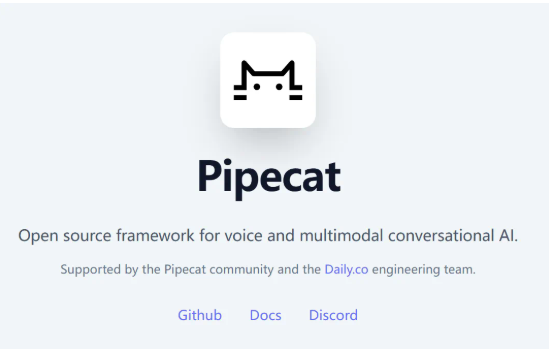Today, with the rapid development of artificial intelligence technology, OpenAI officially released its latest real-time API on October 1, 2023. This technological breakthrough provides developers with powerful tools to build intelligent voice applications. The release of the API has attracted widespread attention on OpenAI DevDay Singapore site, especially Daily.co engineers shared their valuable lessons and lessons in using this API. These engineers not only successfully built products using real-time APIs, but also actively participated in the development of the open source project Pipecat, aiming to provide convenience and support for more developers.

The core feature of the real-time API is its superior “voice-to-voice” processing capability, which allows developers to achieve smooth voice interactions with extremely low latency. By converting voice input into text and then converting GPT-4o output into voice, developers can create a more natural and human conversation experience. This process is simple and efficient. From voice input to voice output, you only need to go through a few key steps: [Voice input] → [GPT-4o] → [Voice output]. The application of this technology not only improves the user experience, but also brings new possibilities to the field of voice interaction.
During the demonstration, the team emphasized the importance of Voice Activity Detection (VAD) in voice applications. Since there are few completely quiet environments in real-world application scenarios, they recommend setting the "Mute" and "Forced Reply" buttons to optimize the user experience. In addition, the real-time API also supports managing the conversation status of multiple users and the output of user interrupted LLM, which makes the conversation process more flexible and efficient, and can better adapt to complex interaction needs.
In order to enable more developers to get started quickly, the Pipecat project provides a vendor-neutral Python framework for real-time APIs. This framework not only supports OpenAI's GPT-4o, but is also compatible with more than 40 other AI APIs, covering a variety of transport options such as WebSockets and WebRTC, greatly simplifying the development process. The framework also contains a large number of practical core functions, such as context management, user state management, and event processing, which provide developers with powerful tools to help them create smarter and more efficient voice interaction applications.
OpenAI's real-time API provides developers with a new way to build smart voice products. As this technology continues to mature, future voice interaction applications will become more intelligent and humanized. The application prospects of this technology are broad and are expected to bring revolutionary changes in many fields and promote the further development of voice interaction technology.